Creative Director & Founder of More or Less Magazine Jaime Perlman On the art of sustainable fashion

Polaroid by Benjamin Tietge
Interview by James Wright
Jaime Perlman, Ex-Creative Director of British Vogue, is also the creative mind behind More or Less, a publication that celebrates the intersection of sustainability, individuality, and creativity in fashion. With a background in high-profile roles at Vogue, as well as a current position as the VP of Global Brand Image at Tory Burch, Jaime has cultivated a unique space that elevates emerging talents while championing a more mindful approach to fashion. In speaking to Jaime, we explore her journey, the evolution of More or Less, and how she’s using her publishing platform to shape a more sustainable and intimate worldview within the industry.
I feel brands are still drawn to being associated with something cool, edgy, and underground. I think there’s a real longing and demand for the presence of magazines. The ones with a strong, unique point of view
James Wright: How have you been finding the sideways move, working at a brand? Do you feel as though the notion of integrity in brand-building and image-making is legitimately achievable in an age of very careful tracking of growth and sales? What do you believe is the blend between commercial realism and creative vision in today’s market?
Jaime Perlman: I had worked at Vogue for most of my professional career, leaving in 2017 after serving as the Creative Director of British Vogue since 2010 and before that, I was Art Director. When I left, immediately starting up my own studio, I knew it was time. I had spent my whole career at Vogue, starting in the US before moving to London in 2005, but I had always thought about what my next steps might be. It was always a dream of mine to start my own creative studio, so when I left, I took that opportunity.
One of the jobs I had done under the studio was a lookbook and a holiday campaign for Tory Burch. The campaigns were a success, and Tory offered me an opportunity to join her team. She allowed me to keep my studio, and my magazine More or Less, and it was too good of an offer to resist. I had also quietly decided that it was time to return to America after being away for so long — I wanted to be closer to my family. The pandemic only reinforced that feeling. With travel restrictions in place, I worried about not seeing them enough, and everything aligned for me to move back to New York with the opportunity to work for an incredible brand.
Tory is truly amazing. What drew me to Tory was how she has built a brand with real purpose— while also being fun, cool, and genuinely interesting. Her foundation for women's empowerment especially resonated with me as it provides female entrepreneurs not just with resources and training, but actual financial support to help them build and sustain their businesses. That mission felt meaningful, especially after launching More or Less, which also carries a larger purpose. So, to work within a brand that shares that kind of vision was incredibly appealing to me.
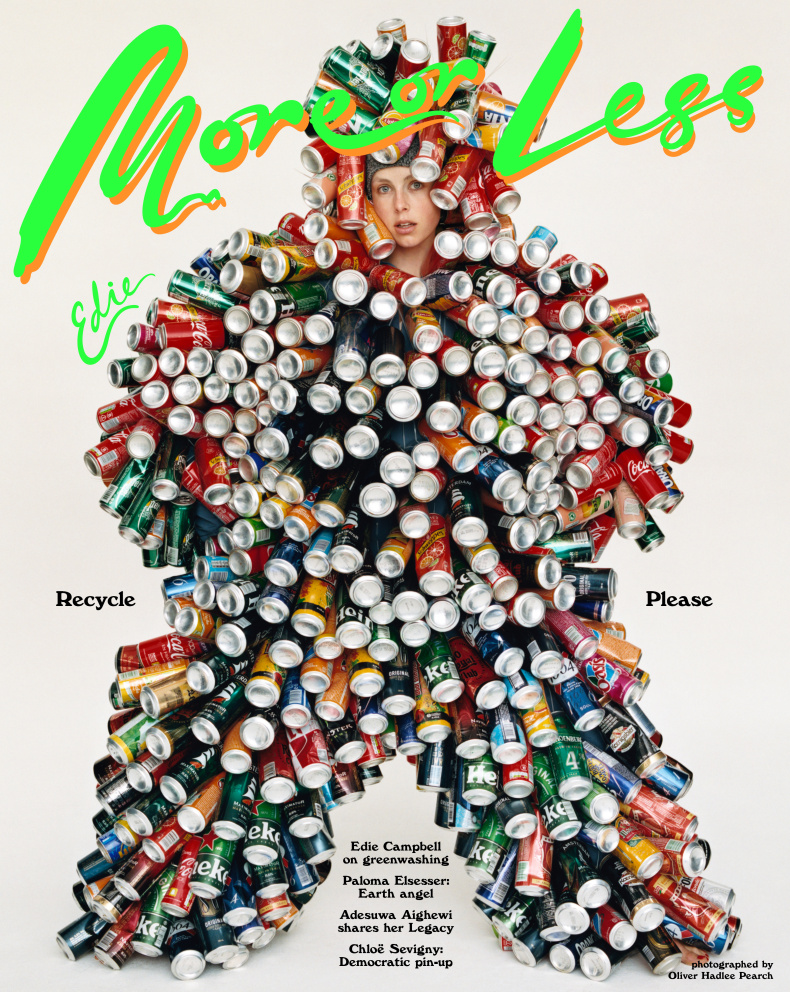
Edie Campbell, photographed by Oliver Hadlee Pearch and Charlotte Collet, 2020; courtesy Jaime Perlman
JW: That all sounds quite rare in many ways—having the freedom to run your studio and publication while holding what seems like a full-time role. I’m curious how you navigate the balance between working with creatives you admire, whether in photography or styling, and the commercial realities of a brand as large as Tory Burch. Art buying isn’t something people often talk about—what factors come into play when making those decisions? How do you weigh the need for brand growth and sales against selecting artists purely for their vision and talent?
JP: I wish I could say I just snap my fingers, make a decision, and everything happens exactly the way I want it — but it’s never that simple. Obviously, with a brand as big as Tory, and with such financial pressure, every decision we make is really thought through. Ultimately, Tory is the creative driving force behind her own brand, but what was exciting when I joined was that she wanted to shake things up, do things that felt different, and bring in a sense of irreverence. Basically, we were just thinking how fun it would be to work with somebody like Johnny Dufort, who brings a rebelliousness and energy to the brand that felt like a departure from what had happened before. We also started working with other photographers like Jamie Hawkesworth and Oliver Hadlee-Pearch to carry on that sense of freshness and modernity we were trying to establish with the new image of the brand.
Tory Burch is a brand with a very strong sensibility and image, and it naturally carries that forward. It reflects Tory’s personal taste and how she’s evolved over the years—I mean, she started the brand twenty years ago. It all stems from her; it’s been her vision from the beginning. And I think what people fell in love with is her—her world, the one she created, and the feeling of wanting to be part of it. So for us, it’s about continuing that storytelling in a fresh and modern way.
A lot of the new designers and young people coming into fashion are putting sustainability first. People are designing with deadstock fabrics, secondhand materials, and organic matter, like fungus and bacteria
JW: For the uninitiated, can you speak to how the collaboration on-set has changed over the years of you working, both commercially and editorially? Do you feel as though the dynamic between brand, publication, creative director, photographer and talent has shifted? If so, in what way?
JP: Fashion is all about relationships, and having been in the industry for a long time, those relationships continue. I used to be the new kid on the block, and now I’ve kind of been around the block—but the people I work with today are often the same ones who were with me from the beginning. On set, I still collaborate with photographers I worked with when I was just starting out, or hair and makeup teams I worked with at British Vogue fifteen or twenty years ago. Those connections last if you maintain them.
But it’s also different now. With More or Less, which is a very independent publication, we’re not working with huge budgets, so I give contributors a lot more editorial freedom. I see magazines as a platform to showcase the work of people I admire—I hire them because I love what they do. So we figure things out together. When someone is investing their own time and resources into a project, you want them to feel like they have creative freedom, ownership, and agency over their work. In advertising, it’s different—you’re paying someone a lot of money to produce a specific brief.
“Be nice to everyone on your way up, because you’ll see them again on your way down.” And I really do believe that. In this industry, careers are long. Some people disappear, but most of the time, they just keep coming back. There are plenty of people in fashion who are cutthroat, mean, or openly ambitious in their own way—but I prefer to work with people I get along with. I like to have fun on every shoot if I can. And when that happens, it makes everyone want to work together again.

Max Richter by Jamie Hawkesworth, 2024; courtesy Jaime Perlman
JW: Why is it that print retains a desirability for talent, representation and brands? The print cover will overwhelmingly be seen on social media, digital covers in theory could get a lot more mileage and there are significantly more commercial mechanisms for partnership. And yet...the prestige for want of a better word hasn’t died, even if the industry itself contracts. Why?
JP: Every cover I think about, I consider simultaneously as both a print and digital image. There was one cover we planned that ended up being digital - only because one of the models had to be recognisable on the cover. We had done this incredible makeup story where the model was completely unrecognisable—therefore, her agent wouldn’t allow it for the print cover. So we ended up doing a digital version and a separate print version.
But also, more people are going to see the work digitally and on Instagram, so that becomes a big part of the process that you think about that right away — how everything is going to live together on a grid, how we’re going to post it. Is it a block of three? A block of six? An odd number? You start considering Instagram as the main channel in a way, because, realistically, the magazine doesn’t have the circulation of Vogue.
I do believe there’s still a huge interest in the finding – that feeling of discovery, like back in the day when you’d go to a record store to uncover new music or browse a bookstore or magazine shop to find rare, cool titles you wouldn’t have come across otherwise. There’s a real longing for brands to be affiliated with titles that feel off the beaten track, something they can almost claim as their own. There are so many magazines popping up all the time, and I feel brands are still drawn to being associated with something cool, edgy, and underground.
I think there’s a real longing and demand for the presence of magazines. The ones with a strong, unique point of view — like The Gentlewoman or System — are the ones that will have more longevity. Magazines that serve a purpose beyond just being an edgier version of Vogue. It’s much easier to self-publish now than it used to be. In the past, all the magazines — I-D, Vogue, Harpers — were working with the same people. But now, with the democratisation of photography, there’s a plethora of incredibly talented photographers and stylists at all levels. It’s exciting to discover new talent. These independent titles now have the freedom to build their own creative teams and develop a look and feel that’s distinct from other magazines.
On set, I still collaborate with photographers I worked with when I was just starting out, or hair and makeup teams I worked with at British Vogue fifteen or twenty years ago. Those connections last if you maintain them
JW: With the publishing schedule, was the decision to do one issue a year — aside from those quarterly or biannual releases — driven more by bandwidth and time constraints, or was it a creative choice? Did you feel that an annual publication would be better suited to your commitments, giving you the space to craft something that stands on its own, without getting lost in the typical advertising cycles?
JP: We started off doing two issues a year, but it proved too difficult. It really comes down to bandwidth, and we felt that one issue a year is enough. The magazine is about sustainability and people, so putting out a physical issue once a year aligns with the ethos of the magazine.
JW: You’ve shared in detail how you pull together More or Less into your limited release print copies, donating all the proceeds to charitable organisations — like planting a tree for every one you take down to produce the issue. Has it been rewarding to learn so much about the behind-the-scenes process of mechanically making a magazine, and how you can actually direct that process for positive change?
JP: Because the magazine is so focused on sustainability — from the content we feature to our use of all vintage or eco-friendly fashion, and covering topics like climate change — it felt right to align the magazine with those values. The magazine was never meant to be a commercial venture; it wasn’t about making a living off of it. It started as a creative outlet for me, something that felt different to what I was doing at Vogue, but also an expression of something I felt deeply connected to and authentic about.
I wanted to create a magazine with a strong point of view that felt different from what I had been doing before. It was almost like a palette cleanser or a relaunch of myself as a creative director. When I started the magazine, I didn’t know if I’d do more than one issue, but then the theme of fashion’s impact on the environment became more pronounced in mainstream conversations.
In 2018, when the magazine launched, an article came out about fashion being the second-highest polluting industry in the world. It made waves globally and suddenly it became trendy to talk about sustainability, even in marketing. Brands were forced to communicate their sustainable credentials—whether or not they actually had them. And all of this coincided with the launch of More or Less.
I was coming off a high-profile position at British Vogue, and I wanted to use my status in the industry to bring attention to something that could help facilitate change. When we launched, we worked with Redhook Labs, a school for underprivileged kids to learn photography. We did a shoot with one of their students every issue until the school shut down during the pandemic. There was always an element of giving back to various charities and doing something positive. The idea was that the magazine would have some kind of positive repercussion.
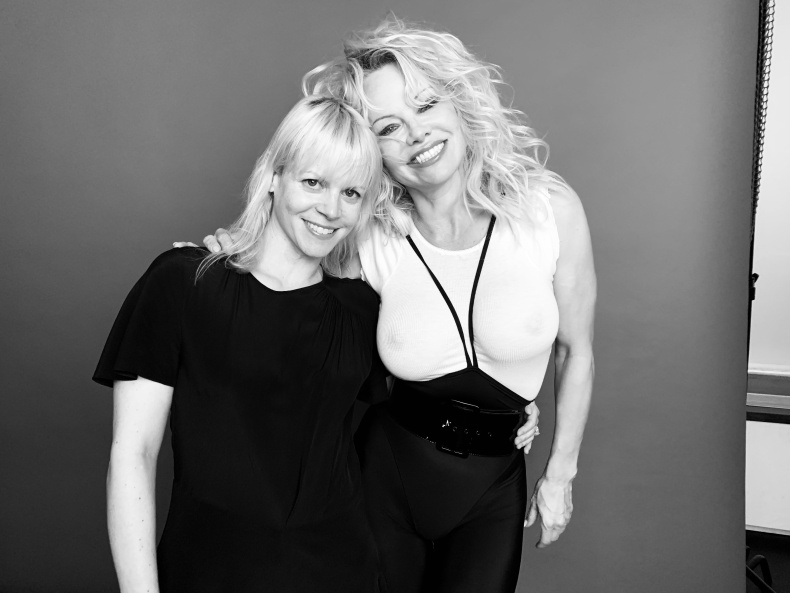
BTS with Pamela Anderson for More Or Less cover, 2019; courtesy Jaime Perlman
JW: How do you find the financial challenges? Do you feel there is a way to engineer a sustainable business model for independent magazines beyond what exists – creative agency, events etc? Or...are you comfortable with it being the passion project you’ve described it as?
JP: I think that’s definitely the golden question. When I started in magazines, you could make a really good living just working in them full-time. Now, I feel like that’s not as possible. So, I’m always interested in considering new ideas and innovation, and what’s attractive about having an independent magazine is the opportunity to be innovative and use the platform to spin off other businesses.
So, in a way, it is about just having a magazine, but I think there’s so much more possibility in the world of vintage, secondhand resale, events, panels, podcasts...Right now, More or Less really exists in its pure form. We do a lot of brand partnerships, like creating zines for certain brands around sustainability or partnering with a brand for the Green Carpet Fashion Awards. But I think it’s really about creating a bigger business that brands want to be a part of — not just partnering with them on small projects. I don’t have the blueprint for that yet, but I think the key is creating something that brands want to buy into, rather than asking brands, “What can we do together?”

Tory Burch by Johnny Dufort & Benjamin Bruno, 2021
JW: And then there’s the question of how we communicate individuality through fashion. The talent celebrated for having a distinct personal style are often the ones making bold or eccentric choices — the so-called anti-trend. An E.g Chloë Sevigny. Yet, someone’s individuality might express itself in a quieter way, aligning more closely with the prevailing trends of the moment. What is the “filter” for you as Editor of an independent title when it comes to picking talent and features?
JP: I have an incredible team who bring great ideas forward, and when you have a lot of guardrails around a theme, I’ve noticed it sparks even more creativity. I have photographers and stylists coming to me all the time with amazing ideas already formulated, so we end up commissioning a lot of that work, as well. It's a combination — the editorial of More or Less, along with the studio team, and people introducing us to incredible designers, or even discovering an amazing biodynamic flower farm in East Sussex.
I’m always thinking about who I can bring in that might feel like a bit of a surprise, I want a cover that evokes an emotion. In the end, everything fits together. For example, when we got Max Richter, he was one of the first people we thought of for issue eight, even though he’s a bit obscure. He’s really passionate about sustainability — his wife, Julia, has this incredible studio in the Cotswolds, and they have a lot to say about sustainability, with nature really informing his work.
We did the shoot, and the pictures were very quiet and peaceful. I wasn’t sure if it would work as a bold cover, but it ended up being one of my favourites. I got some of the most positive feedback about that one. It was black and white, which felt different as oftentimes covers have bright colours and energy, but this one was quiet and still, and I loved it. Even though Max is a niche name that not everyone knows, a lot of our audience really connected with him. It was such a joy to put him on the cover and have Kim Jones interview him.
When I started in magazines, you could make a really good living just working in them full-time. Now, I feel like that’s not as possible. What’s attractive about having an independent magazine is the opportunity to be innovative and use the platform to spin off other businesses
JW: Is there someone in particular; someone’s distinct, individual style that you’ve found particularly inspiring over the years of projects with Vogue and More or Less? Who is your dream cover star?
JP: That’s a really hard question. I’m trying to think of who’s had a real impact. I loved working with Pamela Anderson. I even went and had a drink with her after the shoot, and that was really fun. She really stayed with me afterwards, and I love what she’s become.
JW: Sustainable fashion can often feel like an oxymoron – given that under even the best circumstances, the amount of fashion produced (even sustainably) is unsustainable and damaging to the environment. But More or Less highlights – what is likely the most sustainable form of fashion — recycling. Can you speak to that?
JP: The thing is, fashion — anything new you're creating and putting out into the world — is not sustainable. You’re having an impact on the planet. The idea of sustainable fashion isn’t real to begin with. The most sustainable way of dressing is by wearing second-hand, but I think there are definitely ways to maintain better practices. We’re all about celebrating brands that are doing things better, and it’s also important for big businesses to change their practices in order to have a lower impact.
One thing I’ve been very conscious of is that I didn’t want More or Less to become a vehicle for greenwashing. I know a lot of friends who want partnerships, and I’ve made judgment calls because sometimes it does feel like greenwashing. Some brands have initiatives, but they don’t have the credentials to back it up. We work with brands that aren’t necessarily sustainable or B Corp certified, but we ensure there’s authenticity behind their efforts.
There are certain brands we’ve turned down because we didn’t feel they had enough substance behind their claims. We’re very choosy about what we do, and I don’t want More or Less to become a vehicle for big brands to use for greenwashing their marketing. What’s really hard is when you have these big companies with huge financial pressures that have to work backwards to change everything in their business and supply chain to make it more sustainable. It’s not something that’s going to happen overnight—it’s a huge job, and it’s very difficult to communicate about it when you’re just starting that process. You don’t want to make false claims, saying you’re doing all this stuff when it’s actually going to take five years.
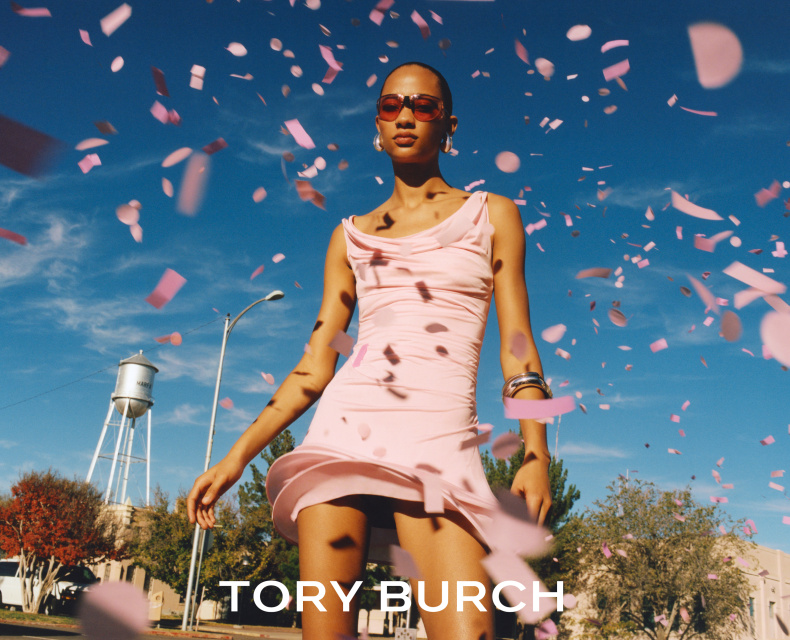
Tory Burch SS24 by Jamie Hawkesworth and Brian Molloy
But the thing I’ve noticed most recently is there’s a bit of sustainability fatigue, which is something the fashion world doesn’t really talk about. People aren’t investing as much budget into the marketing side of things, which might mean they’re not investing as much in the backend to actually make those changes. You’re starting to see people view sustainable fashion as a moot point. Every brand will eventually be practicing more ethically and greenly, and you won’t even need the word “sustainable” anymore.
But right now, it feels less of a priority. People want to make money, the economy is in bad shape, the world is falling apart, and people are depressed. They just want to have fun —they don’t want to do the homework. They don’t want to spend a lot of money, and eco-labels, by nature, are usually more expensive because of the quality of the supply chain and everything that goes into it. Right now, people are feeling a bit bratty and just want to live their best lives and enjoy themselves, which I totally understand.
That said, I think there’s a way to do both—sustainability and fun. The positive thing is, a lot of the new designers and young people coming into fashion are putting sustainability first. People are designing with deadstock fabrics, secondhand materials, and innovative materials made from things like fungus and bacteria. People are starting their education on sustainability from the beginning and entering the industry with that mindset.
It’s the forefront of their mind, instead of looking backwards. So I'm hoping once those people come into power, things will eventually infiltrate into a more eco-friendly fashion landscape naturally, if that makes sense.
Follow @jaimeperlman and @moreorlessmag
Jaime loves
Dream Away by Michael Northrup

Drawing on 'snapshot aesthetics', this photo book reveals the timeline of a former relationship – a kind of visual stream-of-consciousness
Nightshift
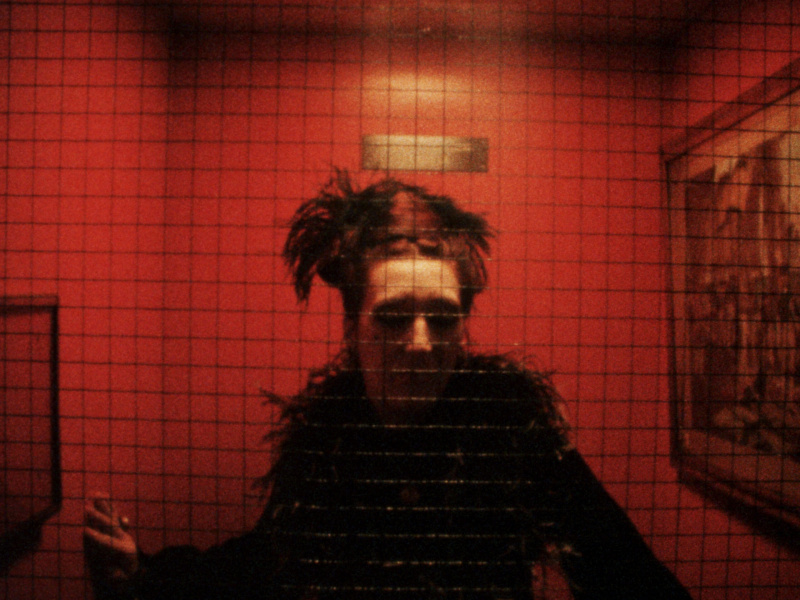
"This visually stunning punk era film stars Jordan Mooney, who was also in Jubilee. I recently saw the remastered version at Anthology Film Archives in NY"
Pina Bausch – Vollmond
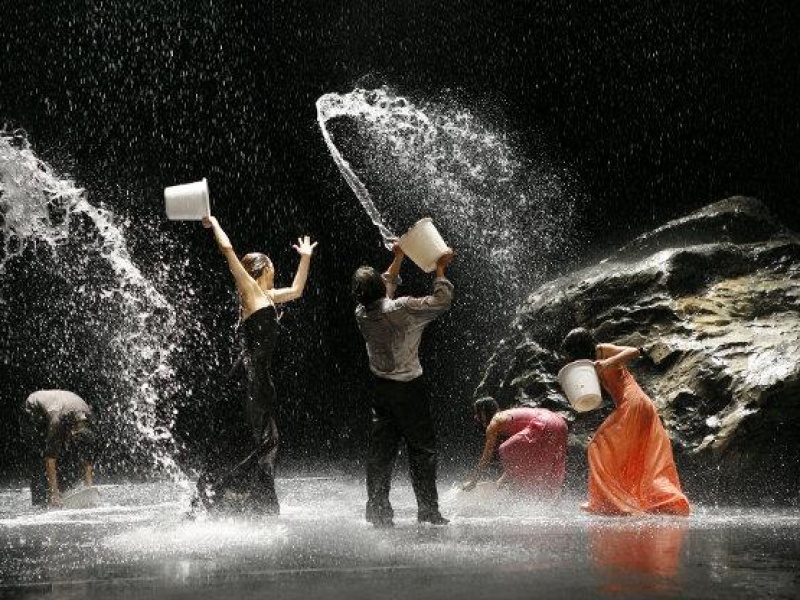
"An incredible dance piece with impressive stage design, involving water and a massive rock. I saw it recently in London at Sadler’s Wells"
So Books, Tokyo

"Just an amazing book shop where you can spend your life savings on a beautiful rare print"
Click here to check out more features...
Stephen Galloway

Okay Kaya

Chris Black

Jarod Taber

Ottessa Moshfegh

Lorraine Wild

Lorraine Wild

Caroline von Kuhn

Daisy Hoppen

Camille Charrière

Amé Amrit

Indigo Lewin

Steph Wilson

Amanda Charchian

Nick Haramis

Sara Morosi

Stefan Siegel

Kristine McKenna

Johnnie Collins

Lena Felton

Stéphane Sednaoui

Zak Ové

Valentine Avron

Kay Montano

Douglas Dare

Lee Swillingham

Posy Kai Dixon
